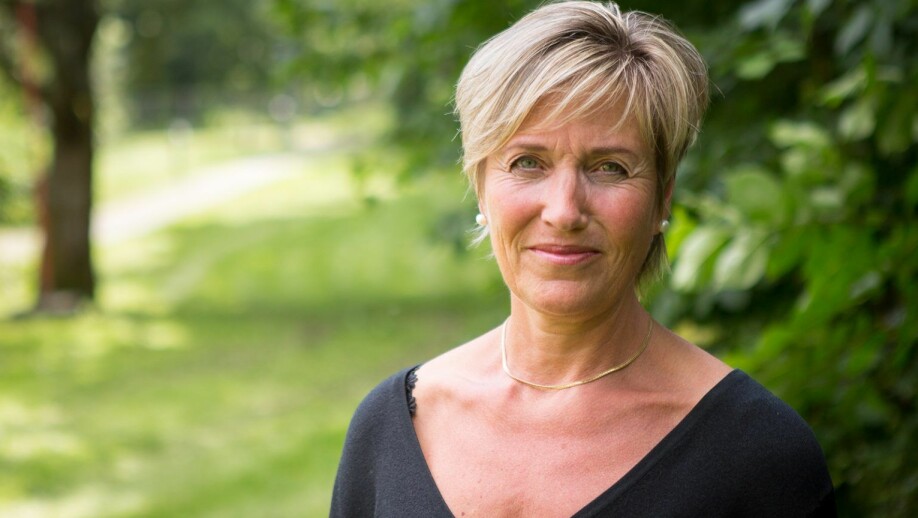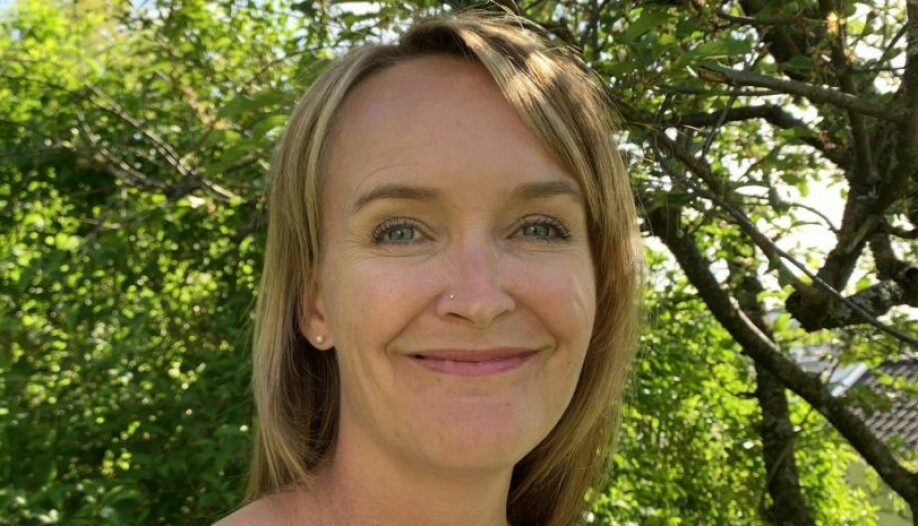
Quiet people suffer without being seen
A surprisingly large portion of the population may suffer from a personality disorder that very few have heard of.
Fear of criticism. Fear of rejection. Fear of intimacy. Fear of being ridiculed. Constantly self-critical.
Avoidant personality disorder is probably the most common personality disorder in the population. Perhaps as many as 4 per cent of us may have what is also called anxious personality disorder.
“These are the patients who have always been quiet,” says Ingeborg Ulltveit-Moe Eikenæs to Sciencenorway.no. She has studied these patients closely as part of her doctoral dissertation.
“They may have hidden themselves in kindergarten and at school. They try to remain mostly unseen in the workplace,” Eikenæs says.
Eikenæs believes that somewhere between 10 and 30 per cent of individuals who are treated at a general psychiatric outpatient clinic, may have avoidant personality disorder. Many patients are treated for anxiety and depression, without therapists being sufficiently aware of the underlying personality disorder.
Self-criticism and fear of rejection
You may recognize their fear of building close relationships with others.
The fear of being criticized and perhaps rejected, are also emotions most of us have felt.
Some of us are simply more introverted than others, without it being a big deal.
But for one group of people, these social inhibitions cause so much stress on their mental health that it becomes a disease.
When researchers measure the suffering in this patient group, they are surprised at how much inner pain many of them experience. But these patients suffer in silence.
“As a result, this group of patients has often been overlooked, both by the treatment system and by mental health researchers, says Eikenæs, who now heads the National Competence Centre for Personality-Focused Psychiatry (NAPP) at Ullevål Hospital in Oslo.
Not the same as social phobia
Avoidant personality disorder (AvPD) is not the same as social anxiety or social phobia.
People with avoidant personality disorder are not necessarily afraid of social situations, which is a hallmark of people with social anxiety.
Instead, the common characteristic for these people is a fear of close relationships.
“It turns out that for people with social phobia, their anxiety decreases when they get to know people. For people with avoidant personality disorder, their anxiety often increases the closer and more significant another person becomes to them,” Eikenæs said.
Four years ago, Eikenæs did a doctorate in which she studied the differences and similarities between avoidant personality disorder and social phobia.
“Both my and other, newer, research have shown that there is not as much overlap between these two disorders as previously thought,” she says.
At the same time, she points out that there may be quite a few people who have both disorders.
Anxiety and depression
Many patients with avoidant personality disorder come into contact with the health care system because they seek help for anxiety, depression or an eating disorder.
Many also have a substance abuse disorder.
They may receive help from emergency services for anxiety, intoxication or depression. But this help often comes without addressing the underlying difficulties associated with the terribly strong uncertainty they constantly feel.
“This vulnerability creates a risk of relapse of anxiety and depression,” Ekenæs says. As a consequence, there can be many rounds in the treatment system, without the patient receiving help with their fundamental personality problems.
Eikenæs also wants to remind us that patients with avoidant personality disorder are calm and gentle.
“But that does not mean that the person living with the disorder experiences it as mild,” she said.
Lots of self-loathing
People with avoidant personality disorder often live with a lot of shame and self-loathing.
Another characteristic is that they don’t express their own feelings. Instead, they hide their emotions away.
“Reducing self-loathing is the first commandment in the treatment of these patients,” Eikenæs said.
For many years, researchers strongly disagreed about this diagnosis.
Many argued that it was just a more serious version of social phobia and not a personality disorder. Eikenæs believes that this disagreement may be one reason why there is so little research on such a widespread disorder. It may also have contributed to the fact that society has paid too little attention to this patient group.
Eikenæs compares the treatment AvPD has received with emotionally unstable personality disorder, also called borderline personality disorder.
“This is a mental illness where, thanks to a lot of good research, we are probably now 20 years ahead with treatment options, compared to avoidant personality disorder,” she said.

Treatment can be useful
In general, new research shows that there are only limited differences in results from different specialized treatment programmes for personality disorders.
The crucial thing instead is that the therapist builds a good working relationship with the patient about the treatment.
In addition, treatment must focus on the individual patient’s basic personality problems. It also has to be structured and targeted.
Researchers in this discipline often call this tailor-made or individualized treatment.
“In an article where we summarized the research on treatments for avoidant personality disorder, we concluded that treatment is useful when the focus is on and facilitates the specific problems of this disorder. But much more research is still needed here,” Eikenæs said.
Important to distinguish between avoidant personality disorder and social phobia
When Eikenæs compared patients with avoidant personality disorder and patients who struggled with severe social phobia, she found that the first group had a poorer self-image and struggled more with their own identity and relationships with other people.
“They also had a more serious fear of close relationships than patients with strong social phobia. They felt more fear of being rebuffed and rejected. Overall, they had more personality issues,” she said.
The researcher also found that patients with this personality disorder clearly functioned more poorly in their everyday life than patients with social phobia. This was especially true on the job.
Eikenæs is now focused on encouraging therapists to distinguish between these two patient groups, so patients with avoidant personality disorder receive suitable treatment.
“Although much about the two disorders may seem the same, one is an anxiety disorder and the other is a personality disorder,” she said.
Genes or environment?
Researchers estimate that both avoidant personality disorder and social anxiety are about 50 per cent due to the person’s genes (nature) and 50 per cent their environment (nurture).
Both of these patient groups have a high level of what researchers in the field call genetic vulnerability. If you carry certain genes, there’s a greater risk that you may develop avoidant personality disorder or social anxiety.
Researchers also have found that much about the genetics behind these two disorders is actually similar.
“As a consequence, we wonder what environmental factors mean that some people develop an anxiety disorder and others develop a personality disorder,” she said.
Eikenæs has also found through her research that childhood neglect was more prevalent among patients with avoidant personality disorder than those with social anxiety.
“A lack of care is probably one of the factors that can contribute to a person going in the direction of avoidant personality disorder rather than social anxiety,” she said.
But there’s isn’t enough research to fully support these assumptions, Eikenæs said. So she can’t say this for certain.
It is important to remember that avoidant personality disorder can also occur in people who have not experienced neglect or have not been ignored by their parents as children.
How do these people feel in everyday life?
Psychologist Kristine Dahl Sørensen has tried to learn more about the subjective experience of patients with avoidant personality disorder. Last year she took a doctorate at the Department of Psychology at the University of Oslo.
“I have been interested about how this patient group experiences their everyday lives,” she said to sciencenorway.no.
“I have also looked more closely at how they experience the origin and development of their difficulties,” she said.
Sørensen has also looked at how patients with avoidant personality disorder have experienced their therapies. She has twice interviewed a total of 15 people with this diagnosis.

Ever since childhood
“These are people who are constantly struggling with their relationships to others,” she said.
They struggle to behave "normally". They don’t feel like they can crack social codes.
“People with avoidant personality disorder long for contact with others. At the same time, they are afraid of contact,” she said. “They also struggle all the time with doubt and uncertainty.”
Sørensen says that this is an uncertainty many patients have experienced from early in their childhood.
It starts early in adolescence and develops through childhood, adolescence and adulthood.
Feel misunderstood by others
Several of the patients she has interviewed can tell stories about parents who struggled with their own problems.
A number also described difficulties with peers or bullying.
Patients Sørensen spoke to felt that they often have to adapt to others. They also felt like people really didn’t understand them.
“Many are constantly trying to summon the courage to do something about a troublesome life situation,” she said.
Sørensen also sees clearly how these patients' vulnerability in encounters with other people can help create a cumulative effect, where new difficulties pile on to existing problems. Many of these patients are unable to complete the education they want. Others struggle with their jobs.
But the psychologist also heard about good experiences. She heard about patients who found freedom in the outdoors. Others found the same freedom when engaging in physical activity or creative activities. Or when dealing with animals or young children.
At the psychologist
“This is a group of patients who, when they come to therapy, would like to meet a therapist who is genuinely interested in them. A therapist who sets aside both time and space,” she said.
“It also means a lot to these patients that they feel understood,” she said.
Sørensen says that she and other psychologists who work with personality disorders are now hoping that better treatments will be developed to particularly target the different groups of personality disorders.
“All research on treatment in this area shows that the better adapted the treatment is to the individual patient group, the more benefits the patients get from the treatment,” she said.
“We have to invest resources in developing treatments that are adapted to patients with avoidant personality disorders,” she said. “That’s where the challenge is now.”
Translated by Nancy Bazilchuk
References and sources:
Ingeborg Helene Ulltveit-Moe Eikenæs: “ Avoidant Personality Disorder (AvPD) and Social Phobia (SP) - studies of personality functioning, attachment and childhood experiences.”, Doctoral dissertation at the Department of Clinical Medicine, UiO, 2016. Abstract.
Sebastian Simonsen et.al.: “Specialized treatment for patients with severe avoidant personality disorder: experiences from Scandinavia”, Journal of Contemporary Psychotherapy, 2019.
Kristine Dahl Sørensen: “Lived experience of avoidant personality disorder: How people diagnosed with avoidant personality disorder make sense of their everyday lives and challenges”, doctoral dissertation at the Department of Psychology, UiO, 2019. The dissertation.
“Doubt, fear and longing for avoidant personality disorder ”, article on the website of Erfaringskompetanse.no. The article (in Norwegian).
———































